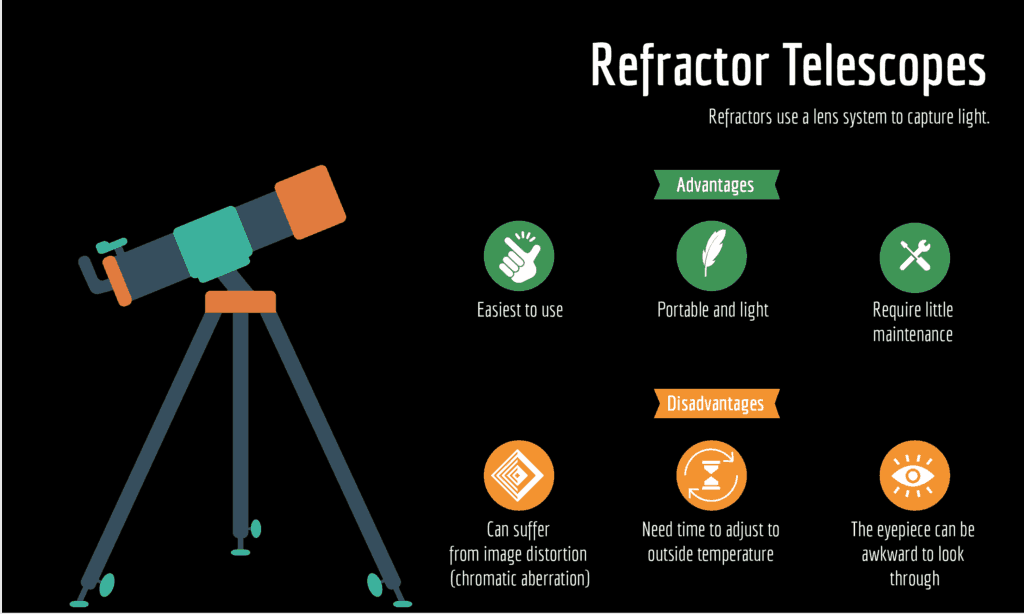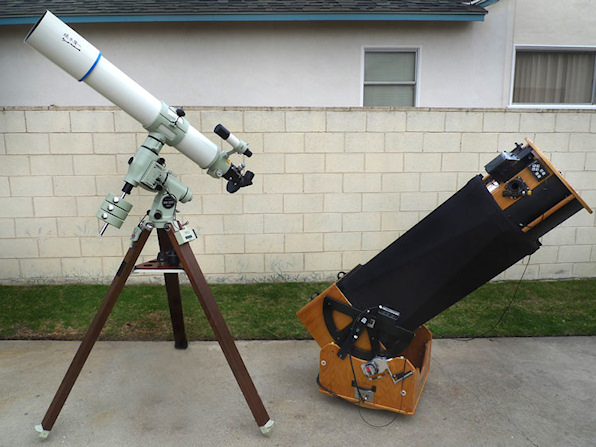
Additionally, large infrared telescopes and other exotic types are used today.

Most modern observatories nowadays use reflectors when it comes to their deep sky observations, since these telescopes tend to be much bigger and better at the job. In the past astronomers used refractors when it came to their observations. Related Questions What kind of telescopes do astronomers use? This is proven as the Newtonian Reflector is the go-to telescope when it comes to this hobby. The reflecting telescope, although a bit harder to use, navigate and maintain for complete newcomers, gives a much better experience when it comes to deep-sky observation and astrophotography. If you’re looking for something more casual when it comes to stargazing or even just sightseeing, maybe you want to observe the moon or the stars, go birdwatching, etc., the refractor is a much better choice as even small planets are able to be seen with small telescopes.įollowed by the easy use and low maintenance, it comes to no surprise why it is the most used type of telescope. To say that one telescope is better than the other would be a mistake, since both types have their advantages and their disadvantages. Yet, as previously mentioned all refracting telescopes suffer from chromatic aberration, due to the different wavelengths of light being bent by the lenses.Īlso, the lenses are much more expensive than the mirrors used in the reflecting telescopes, therefore, the refractors are usually a bit more expensive when compared to similarly-sized reflecting telescopes.

REFRACTOR VS REFLECTOR PORTABLE
Their compact size makes them much more highly portable compared to their reflecting counterpart. They are great for observing the stars, the moon, and other planets, however, they do lack in the deep-space department.Īnother great thing about the refracting telescope is that it doesn’t require a telescope diagonal, since the images are already shown right-side-up. Pros and Consīecause of their simple design, the refractors are much more user-friendly and reliable, needing little to no maintenance, thanks to the lenses being permanently aligned, aside from the occasional cleaning. However, this issue is not present in “triplet” refractors which use three lenses instead of two in order to eliminate the chromatic aberration. If you’ve ever used binoculars, since they are basically two refracting telescopes mounted side-by-side, the chromatic aberration is something you’ve probably already experienced. The special lenses that the refractors use allow them to bend and focus the light, rather than simply reflecting it, in order to give an image.ĭue to the special lenses they use, the refractors can suffer from chromatic aberration, giving an unwanted outline of color around the edges of an object. The short side of the reflecting telescopes is that it can be difficult to keep the optics in alignment if the user is not experienced enough. This makes them a great entry-level telescope for beginners. They are also highly cost-effective when compared to other similarly-sized refractors, as the reflecting telescopes are much cheaper to make thanks to the low cost of manufacturing for the mirrors they use. The pros of the reflector are that they are better suited for deep-sky observing and have no chromatic aberration, aka ‘color fringing’.

However, keep in mind that some reflecting telescopes do not come with a telescope diagonal, which means that for those telescopes the image will be upside down, if the telescope uses an even number of mirrors, or reversed to the side if it uses an odd number of mirrors. The way it works is by having a curved mirror position at the bottom of the telescope that reflects the light that comes from the opening at the other side, which then is reflected to a secondary mirror and then to the eyepiece where you can observe the image. Using this method to create an image makes the reflecting telescopes not have the vulnerability of having color aberration. The use of a curved mirror or mirrors, depending on the design as it can use either a single or a combination of curved mirrors, gives this telescope the ability to reflect observed images back to our eyes. On the other hand, the refractor telescopes use special lenses in order to form an image, similar to that of the binoculars. To put it simply, the reflector telescopes use a combination of curved mirrors in order to form an image by reflecting the light. On the market the most popular types of telescopes are the reflector and the refractor, but what’s the difference? So you’re looking to take up stargazing as your new hobby, yet you’re not certain what kind of a telescope would be better for you.


 0 kommentar(er)
0 kommentar(er)
